Narrative Reports
Purpose
A Narrative document within a company is a structured textual description that outlines how a specific process, function, or system operates in practice. It translates technical workflows or organizational procedures into clear, accessible language for business users, auditors, and other stakeholders.
Beyond describing the process flow, a Narrative can also capture contextual metadata and related elements—such as involved departments, business risks, regulatory requirements, supporting IT systems, and other organizational relationships.
Narrative documents are commonly used for documentation, training, audits, compliance, and cross-functional communication, helping ensure consistent understanding and alignment across teams and departments.
Types of narrative reports
You can report on diagrams and its elements with the Diagram, SOP and Shape Narrative or on non-diagram objects with the Object Narrative. See details for each type here:
Narrative type | Content type (reports on) |
|---|---|
Diagram Narrative | Diagram and its diagram Elements |
SOP Narrative | Diagram and its diagram Elements |
Shape Narrative | A single shape and its Described object |
Object Narrative | A single repository and its metadata |
Create your narrative report
Users with create permission in the Reports folder can create a Narrative object via Click New Object in the Reports folder → Select Report → Enter your object name and click Finish → Go to Settings Tab → Report type: Select Narrative Template → Choose your content type:
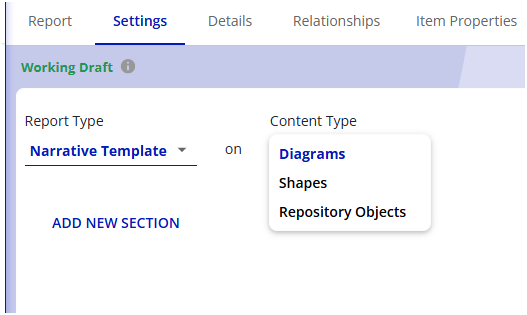
Select your desired section(s) next, configure a header/footer for your narrative and run or preview your narrative report right here.
Note: Approve your narrative report object beforehand so that it is available to users who do not have access to unapproved content. Go to the Manage Cycles tab to run and complete an approval cycle.
Configuring your default narrative reports
The repository administrator can set a default report for each of the narrative types under Repository → Advanced → Narrative Options.

Narrative Content types
Diagrams
The diagram narrative as well as the SOP narrative can report on the content of the complete diagrams and the objects described in it.
To access your last used narrative from the diagram, click the narrative icon, or select a different narrative by clicking the down-arrow next to it:  The icon changes depending on your last selected narrative. The narrative names of your defaults will appear here so that you can use familiar terminology.
The icon changes depending on your last selected narrative. The narrative names of your defaults will appear here so that you can use familiar terminology.
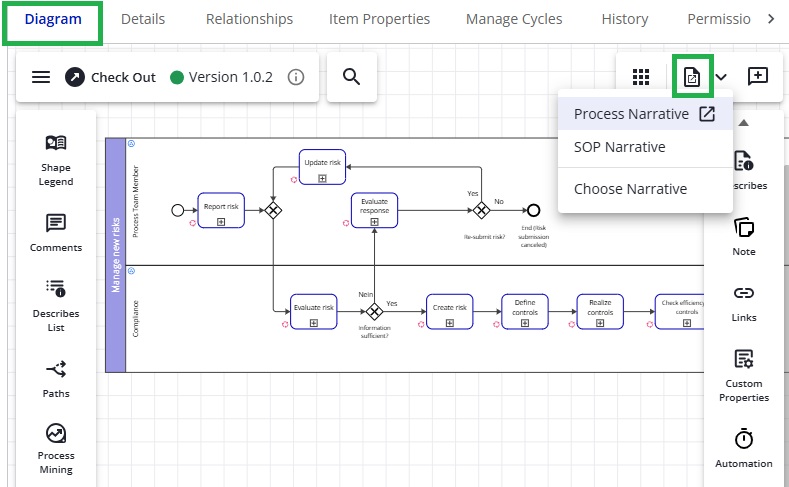
Shape
Select a shape and open the Narrative side panel to view its Shape Narrative:
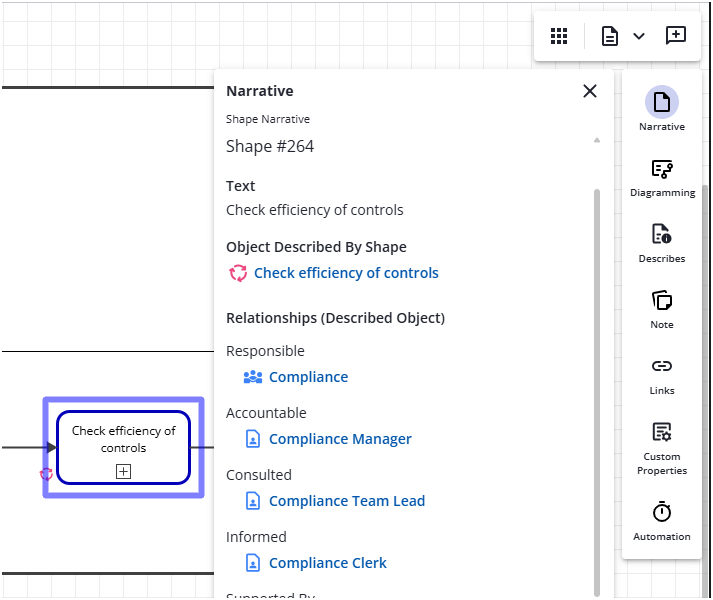
Repository objects
This report gives you all the information on diagrams and non-diagram repository objects.
You can run it from the Narrative report object itself via Run or Preview report:
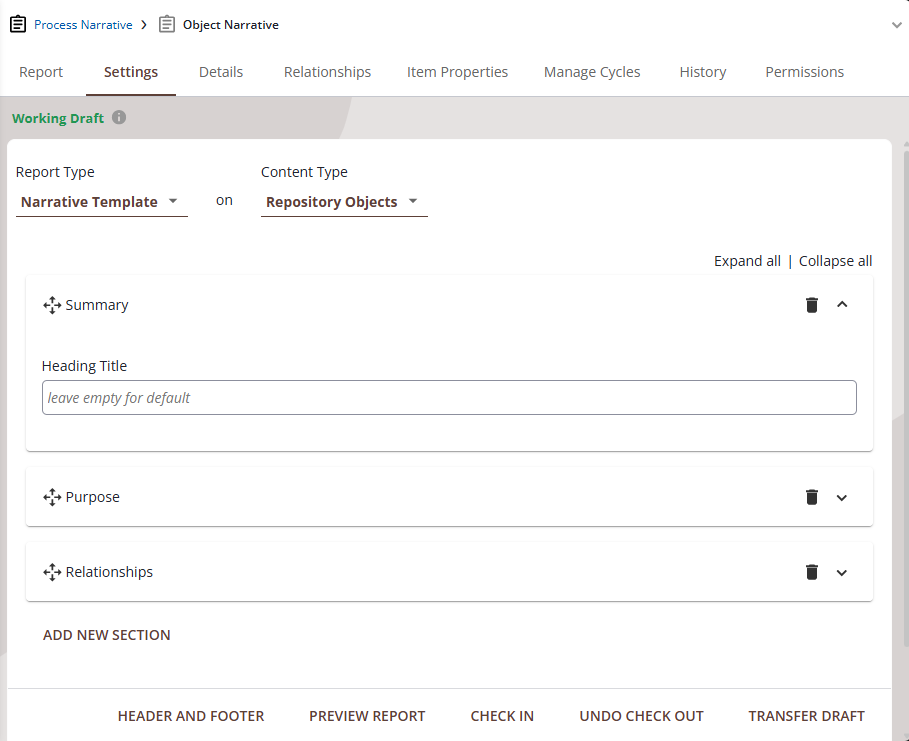
or accessed it from the “more” menu on the main page of the repository object:

The “View Narrative” choice will run the default object narrative template, while “Choose Narrative” allows the user to pick a specific object narrative template.
Narrative Export Options
Every Narrative report can be downloaded as Word file or PDF after running the narrative. The PDF is an export of the corresponding Word narrative. The layout can be controlled via Narrative Template Word.
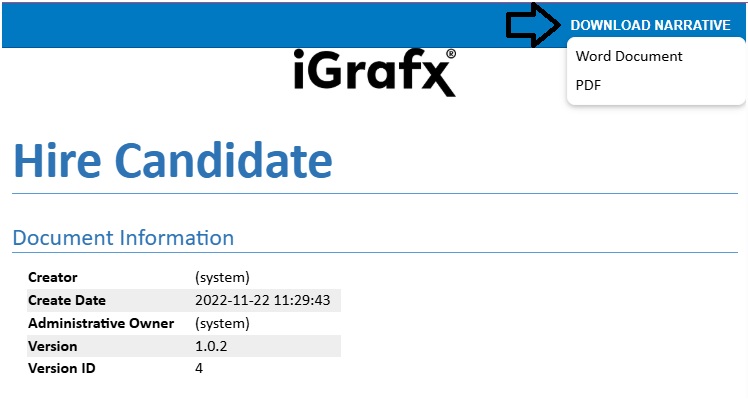
Narrative Template Word
The server administrator can also upload a Word file to be used as a template for the Word Export for Narrative reports under Admin → Customization → Microsoft Word Theme

